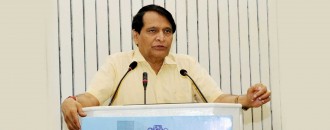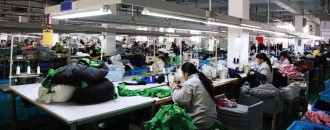
Textiles sector looks to 2017 for policy boost
PTI
2016 turned out to be a mixed bag for textiles, as the government unveiled reforms to impart a thrust to the sector, rolled out innovative campaigns like 'I Wear Handloom', a new Minister at the helm, and a controversy over the appointment of former cricketer Chetan Chauhan as the NIFT chief.
However, as the year draws to a close, the much-awaited new National Textiles Policy is yet to see the light of day, with the Textiles Ministry still engaged in consultations with stakeholders chalking out nitty-gritty of its roadmap.
The policy aims to achieve USD 300 billion (over Rs 20 lakh crore) worth of textile exports by 2024-25 and create an additional 35 million jobs.
The textiles industry is eagerly awaiting the roll out of the policy in 2017, as it could make Indian garments more competitive in international markets by reducing the cost of production, and all eyes are on Irani, hoping she will infuse fresh momentum into the sector.
The year began with the government notifying the Amended Technology Upgradation Fund Scheme (A-TUFS) to provide a one- time capital subsidy for investments in employment-and technology-intensive segments of the textile sector, a move aimed at promoting exports and import substitution.
A Rs 6,006-crore special package for textiles and apparel sector was rolled out in June, expected to create one crore new jobs in three years, attract investments of USD 11 billion and generate USD 30 billion in exports.
The government brought in major labour law reforms in the garb of the package to increase productivity and offered additional incentives for duty drawback scheme for garments.
Around the same time, Textiles Ministry found itself at the heart of a controversy, with the appointment of Chauhan as the Chairman of NIFT, and many questioning the government's decision, raising doubts over his credentials to lead India's premier fashion technology institute.
A few days later, Smriti Irani, shunted out of HRD, assumed the mantle of the Textiles Minister. On taking charge, Irani retorted to critics quoting from a popular Hindi song of the 1970s, "Kuchh toh log kahenge, logon ka kaam hai kehna" (people are bound to say things because they have to say something).
Soon after, there were media reports of a tussle between Irani and Textiles Secretary Rashmi Verma, an IAS officer of 1982 Bihar cadre and sister of Cabinet Secretary P K Sinha.
Apparently, differences cropped up between the two ladies on a range of issues from procedural and the administrative to those related to policy. However, no one came on record to talk about the issue.
Irani tried to steer clear of the controversy by coming up with innovative ideas like the 'I Wear Handloom' campaign to show support for Indian weavers. The campaign became a hit as many prominent faces posted selfies sporting handspun clothing on social networking site Twitter. .






 to success.
to success.